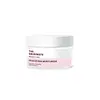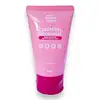What's inside
What's inside
 Key Ingredients
Key Ingredients

 Benefits
Benefits

 Concerns
Concerns

 Ingredients Side-by-side
Ingredients Side-by-side

Water
Skin ConditioningGlycerin
HumectantButylene Glycol
HumectantGlycereth-26
Humectant1,2-Hexanediol
Skin ConditioningHydroxyacetophenone
AntioxidantAcrylates/C10-30 Alkyl Acrylate Crosspolymer
Emulsion StabilisingPanthenol
Skin ConditioningHydroxyethylpiperazine Ethane Sulfonic Acid
BufferingDiglycerin
HumectantPropylene Glycol
HumectantTriethanolamine
BufferingMethylpropanediol
SolventSodium Hyaluronate
HumectantAllantoin
Skin ConditioningGlucose
HumectantSophora Angustifolia Root Extract
Skin ConditioningStephania Tetrandra Root Extract
Skin ConditioningHydrolyzed Hyaluronic Acid
HumectantCnidium Monnieri Fruit Extract
HumectantGlycyrrhiza Uralensis Root Extract
Skin ConditioningPhellodendron Amurense Bark Extract
Skin ConditioningPhenoxyethanol
PreservativeCaprylic/Capric Triglyceride
MaskingChlorella Vulgaris Extract
Skin ConditioningSpirulina Platensis Extract
Skin ProtectingHydrogenated Lecithin
EmulsifyingChlorphenesin
AntimicrobialHexylene Glycol
EmulsifyingStearic Acid
CleansingCholesterol
EmollientCeramide NP
Skin ConditioningWater, Glycerin, Butylene Glycol, Glycereth-26, 1,2-Hexanediol, Hydroxyacetophenone, Acrylates/C10-30 Alkyl Acrylate Crosspolymer, Panthenol, Hydroxyethylpiperazine Ethane Sulfonic Acid, Diglycerin, Propylene Glycol, Triethanolamine, Methylpropanediol, Sodium Hyaluronate, Allantoin, Glucose, Sophora Angustifolia Root Extract, Stephania Tetrandra Root Extract, Hydrolyzed Hyaluronic Acid, Cnidium Monnieri Fruit Extract, Glycyrrhiza Uralensis Root Extract, Phellodendron Amurense Bark Extract, Phenoxyethanol, Caprylic/Capric Triglyceride, Chlorella Vulgaris Extract, Spirulina Platensis Extract, Hydrogenated Lecithin, Chlorphenesin, Hexylene Glycol, Stearic Acid, Cholesterol, Ceramide NP
Niacinamide
SmoothingPolyacrylamide
C13-14 Isoparaffin
EmollientLaureth-7
EmulsifyingGlycerin
HumectantPersea Gratissima Oil
Skin ConditioningCyclopentasiloxane
EmollientDimethicone Crosspolymer
Emulsion StabilisingDimethiconol
EmollientSaccharide Isomerate
HumectantCentella Asiatica Leaf Extract
Skin ConditioningOctyldodecanol
EmollientLeptospermum Scoparium Branch/Leaf Oil
TonicPiper Nigrum Seed Extract
RefreshingMagnolia Officinalis Bark Extract
AntimicrobialPhenoxyethanol
PreservativeEthylhexylglycerin
Skin ConditioningAcrylates/C10-30 Alkyl Acrylate Crosspolymer
Emulsion StabilisingAlpha-Arbutin
AntioxidantButylene Glycol
HumectantWater
Skin ConditioningCryptomeria Japonica Bud Extract
Skin ConditioningPentylene Glycol
Skin ConditioningPhospholipids
Skin ConditioningSphingolipids
EmollientCeramide EOP
Skin ConditioningTriethanolamine
BufferingDisodium EDTA
Niacinamide, Polyacrylamide, C13-14 Isoparaffin, Laureth-7, Glycerin, Persea Gratissima Oil, Cyclopentasiloxane, Dimethicone Crosspolymer, Dimethiconol, Saccharide Isomerate, Centella Asiatica Leaf Extract, Octyldodecanol, Leptospermum Scoparium Branch/Leaf Oil, Piper Nigrum Seed Extract, Magnolia Officinalis Bark Extract, Phenoxyethanol, Ethylhexylglycerin, Acrylates/C10-30 Alkyl Acrylate Crosspolymer, Alpha-Arbutin, Butylene Glycol, Water, Cryptomeria Japonica Bud Extract, Pentylene Glycol, Phospholipids, Sphingolipids, Ceramide EOP, Triethanolamine, Disodium EDTA
 Reviews
Reviews

Ingredients Explained
These ingredients are found in both products.
Ingredients higher up in an ingredient list are typically present in a larger amount.
Acrylates/C10-30 Alkyl Acrylate Crosspolymer is a synthetic polymer. It is used to thicken and improve the texture of products. Due to its properties, it can prevent water and oil ingredients from separating.
Butylene Glycol (or BG) is used within cosmetic products for a few different reasons:
Overall, Butylene Glycol is a safe and well-rounded ingredient that works well with other ingredients.
Though this ingredient works well with most skin types, some people with sensitive skin may experience a reaction such as allergic rashes, closed comedones, or itchiness.
Learn more about Butylene GlycolGlycerin is already naturally found in your skin. It helps moisturize and protect your skin.
A study from 2016 found glycerin to be more effective as a humectant than AHAs and hyaluronic acid.
As a humectant, it helps the skin stay hydrated by pulling moisture to your skin. The low molecular weight of glycerin allows it to pull moisture into the deeper layers of your skin.
Hydrated skin improves your skin barrier; Your skin barrier helps protect against irritants and bacteria.
Glycerin has also been found to have antimicrobial and antiviral properties. Due to these properties, glycerin is often used in wound and burn treatments.
In cosmetics, glycerin is usually derived from plants such as soybean or palm. However, it can also be sourced from animals, such as tallow or animal fat.
This ingredient is organic, colorless, odorless, and non-toxic.
Glycerin is the name for this ingredient in American English. British English uses Glycerol/Glycerine.
Learn more about GlycerinPhenoxyethanol is a preservative that has germicide, antimicrobial, and aromatic properties. Studies show that phenoxyethanol can prevent microbial growth. By itself, it has a scent that is similar to that of a rose.
It's often used in formulations along with Caprylyl Glycol to preserve the shelf life of products.
Triethanolamine is an emulsifier and pH adjuster. It is created using ethylene oxide and ammonia. This gives Triethanolamine a nitrogen core and a similar scent to ammonia.
As an emulsifier, it prevents ingredients from separating and enhances texture by adding volume to a product.
PH adjusters are common in cosmetic products. The pH of a product can affect the effectiveness of other ingredients. A product with a high pH may also irritate the skin.
Learn more about TriethanolamineWater. It's the most common cosmetic ingredient of all. You'll usually see it at the top of ingredient lists, meaning that it makes up the largest part of the product.
So why is it so popular? Water most often acts as a solvent - this means that it helps dissolve other ingredients into the formulation.
You'll also recognize water as that liquid we all need to stay alive. If you see this, drink a glass of water. Stay hydrated!
Learn more about Water